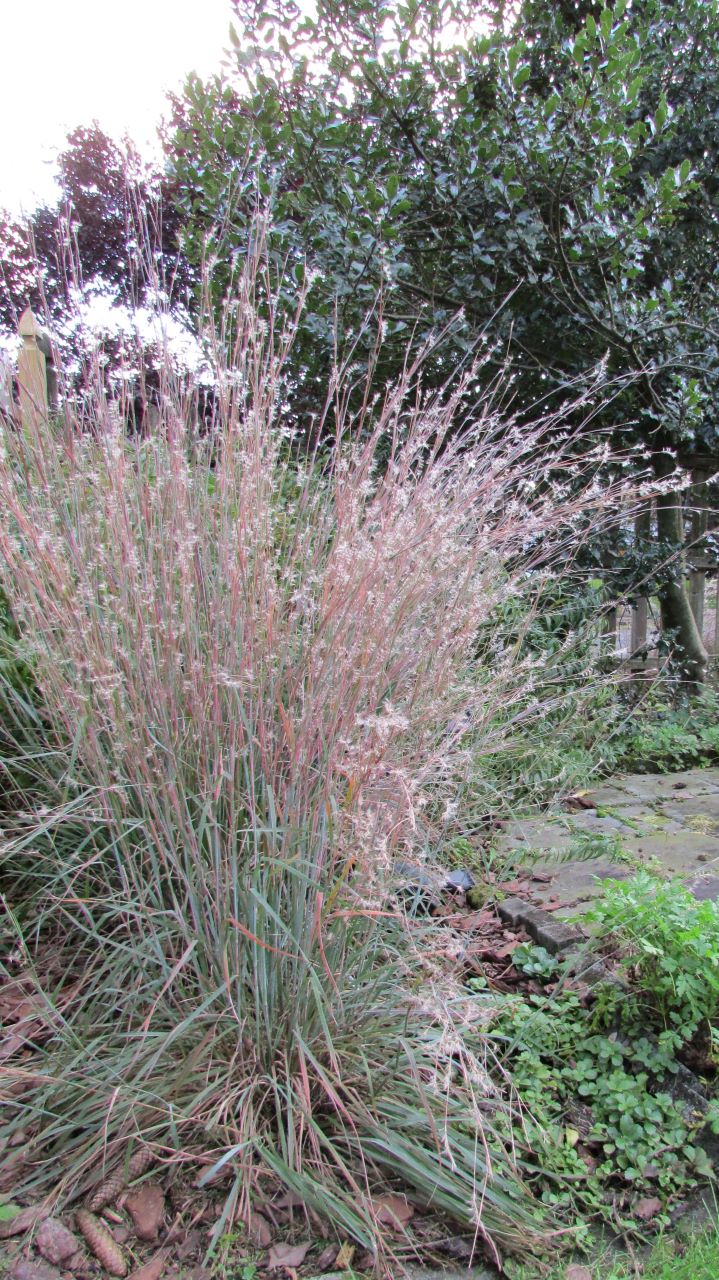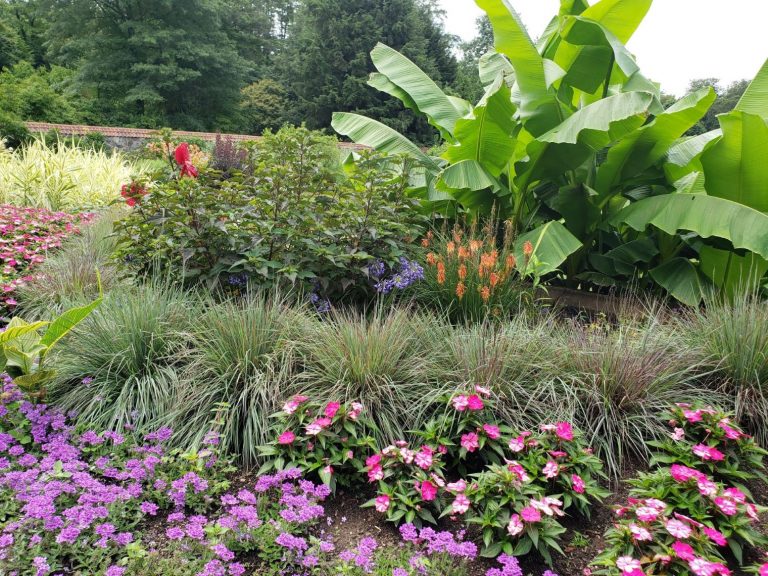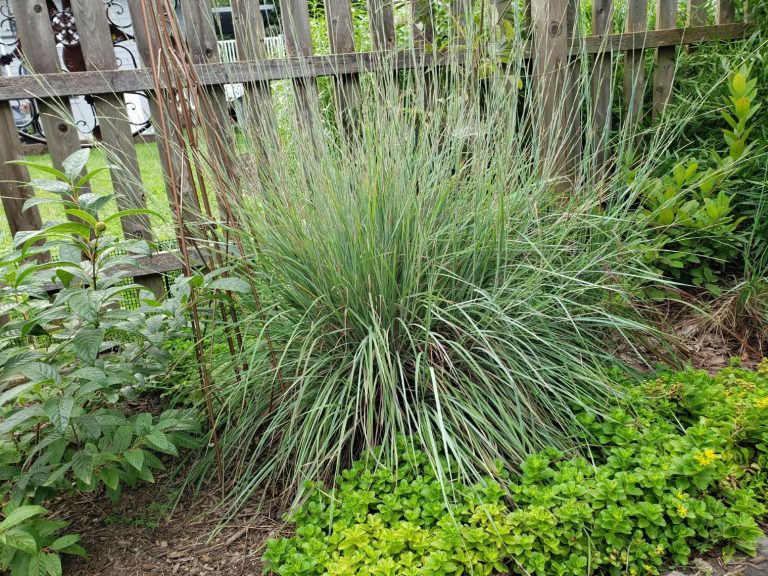Suggesting that gardeners plant a grass can seem humdrum. However, little bluestem will have you singing for joy with its many attributes. Graceful, architectural, easy to grow, wildlife friendly, deer and rabbit resistant, good fall color and salt tolerant top the list.
With a fibrous root system that can reach five feet deep under the right conditions, this tough plant grows in average to dry soils and can handle extreme drought conditions.
Little bluestem is a warm-season grass that starts out slowly in spring and then becomes the attention getter as it grows. You’ll never need to water or fertilize it. It is a bunch grass, so it has a tight basal clump and doesn’t spread. It adds a blue color to the garden with beautiful tones of buff, purple, orange and pink when in bloom and during the fall until frost. Little bluestem grows best in full or partial sun, and too much water will cause it to flop. A mature plant can reach four feet high when in bloom, and it grows about two feet wide. This plant helps control erosion and is an excellent choice for a slope. Its only maintenance requirement is to cut it back in the spring when it begins to grow. How many plants need attention only once per year?
A caterpillar host plant for several butterflies (Lepidoptera), little bluestem also provides cover and nesting material for ground nesting birds. Some birds are known to eat its seeds over the winter. It has a strong architectural presence and when used as an accent plant becomes the exclamation point in the garden. Its beauty, low maintenance requirements, three seasons of interest, ease of growth, disease resistance and high ecological value have led to the Perennial Plant Association to select it as the Perennial Plant of the year 2022 (yes, next year)!
For those planning a meadow, little bluestem is a cornerstone around which meadows should be built due to its high ecological value. So as long as you don’t have to pronounce its latin name, Schizachyrium scoparium, this stellar perennial will have you singing for joy!
For more on growing native plants and virtual garden tours where you can see them in action, visit Native Plant Channel on YouTube and Facebook.
Click to learn more about little bluestem.



